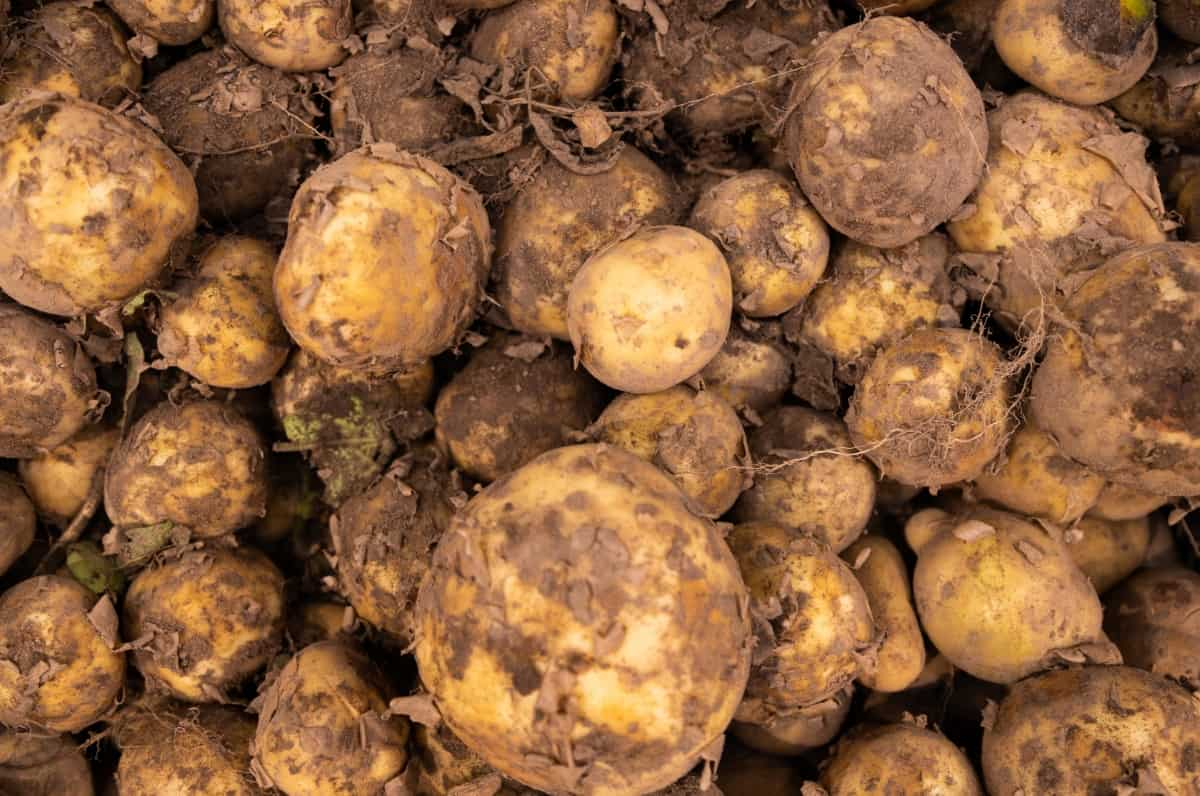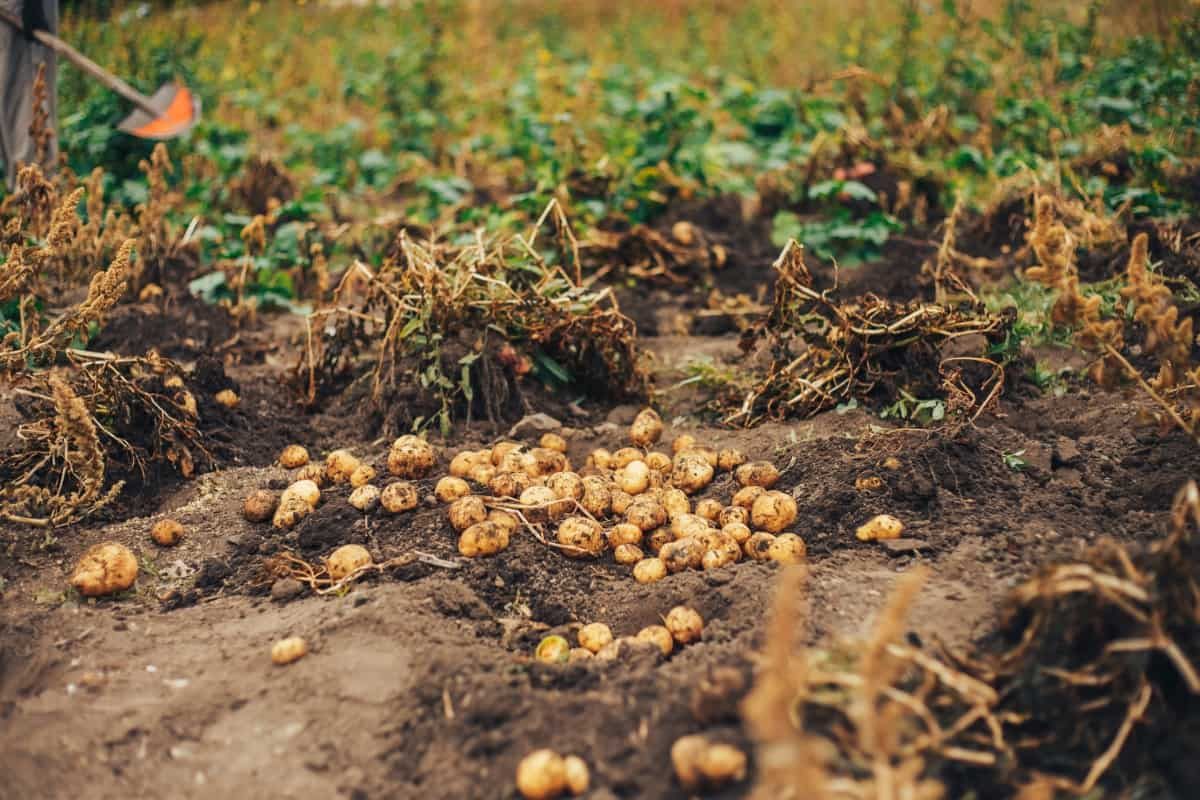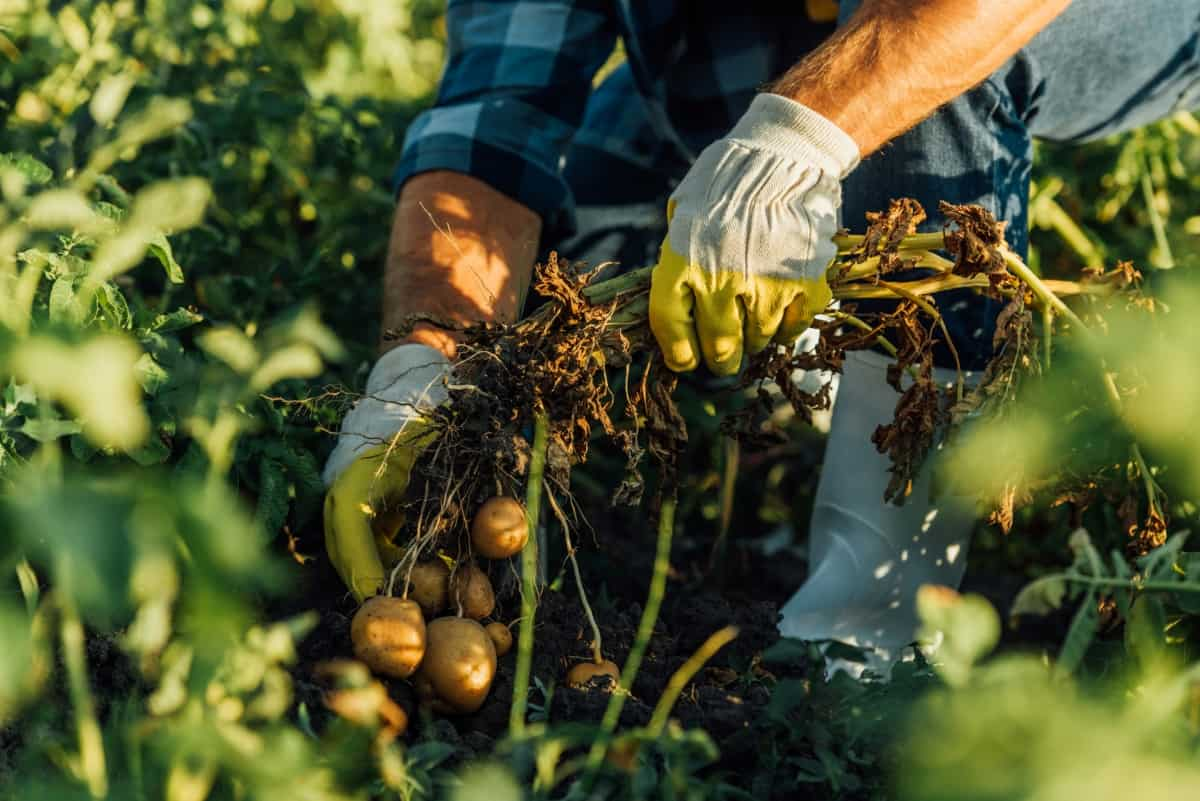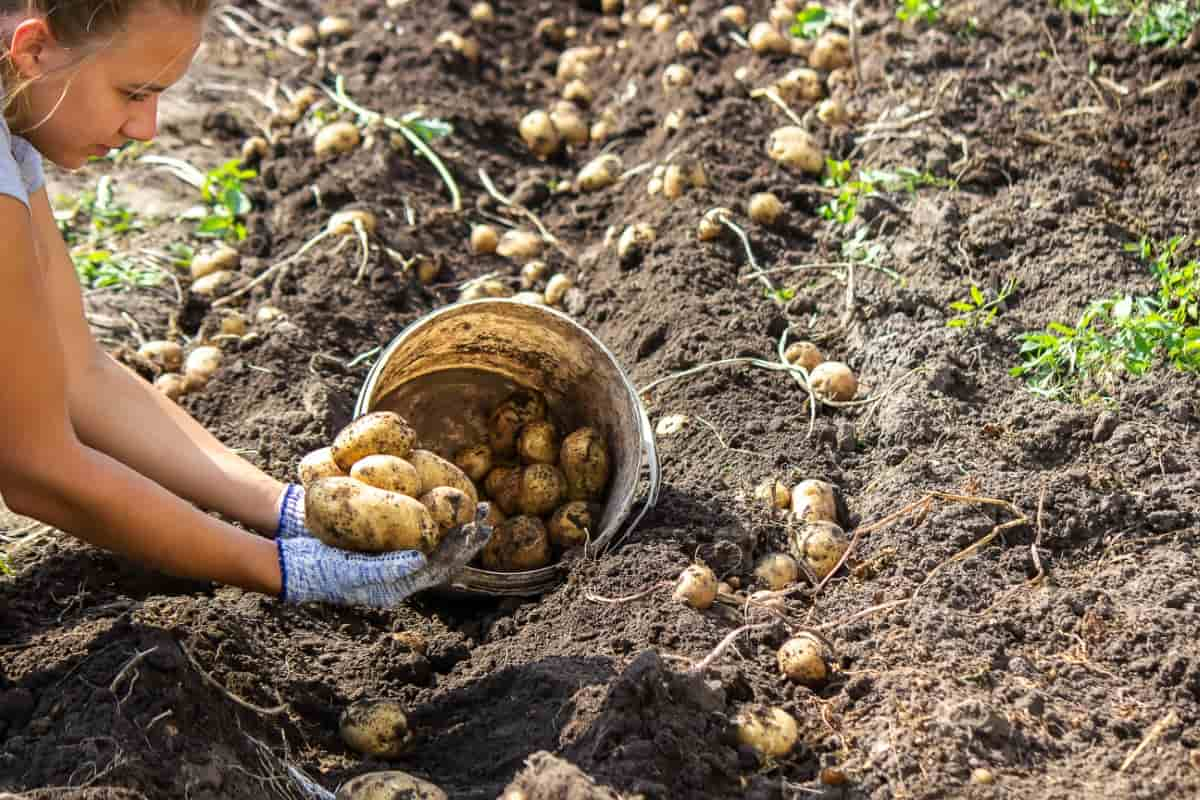Potato scab is a common concern for potato growers, impacting crop quality. Potato scab is a common disease caused by the bacterium Streptomyces scabies. This guide explores the causes, identification, symptoms, and treatment of potato scab. Unveiling the underlying factors triggering scab formation it sheds light on recognizable symptoms, aiding growers in early detection. Understanding these elements is vital for implementing effective preventive measures. The guide also delves into treatment options to mitigate scab’s impact on potato yields.

How to Prevent Potato Scab
Understand Potato Scab Causes and Risk Factors
- The primary cause of potato scab is the presence of the bacterium Streptomyces scabies in the soil.
- The bacterium thrives in alkaline soils with a pH above 5.2. Poor soil management and improper pH levels contribute to scab development.
- Overhead irrigation and inconsistent watering can create favorable conditions for scab development. Ensure proper irrigation methods to reduce the risk.
- Planting potatoes in the same soil consecutively increases the likelihood of scab. Crop rotation disrupts the bacterium’s life cycle.
- Using infected seed potatoes is a common way scab spreads. Always source certified, disease-free seed potatoes to minimize the risk.
- The breakdown of organic matter in the soil can release compounds that promote scab. Proper composting practices can help mitigate this risk.
How to Identify Potato Scab: Symptoms and Signs to Look For
- Scab manifests as raised, corky, and scaly lesions on the potato tubers. These lesions can vary in size and severity.
- Affected areas may develop a cork-like texture, giving the potato a rough and unattractive appearance.
- Scab lesions can cause discoloration, ranging from brown to tan, on the potato surface.
- Scab lesions can be superficial, affecting only the skin, or deep, penetrating the flesh of the potato.
- In addition to tubers, scabs can also affect stems and leaves, causing scaly lesions and blemishes.
- While scab affects the aesthetic quality of potatoes, it generally does not impact their edibility.
Cultural Practices and Soil Management to Prevent Potato Scab
Begin by ensuring proper soil pH between 5.0 and 5.2, as scab thrives in alkaline conditions. Practice crop rotation, avoiding consecutive potato plantings in the same soil to disrupt the bacterium’s life cycle. Opt for certified disease-free seed potatoes and implement stringent sanitation measures to prevent introducing the pathogen. Manage irrigation carefully, opting for drip systems over overhead watering to minimize soil splashing.
Incorporate organic matter into the soil through well-managed composting, as improper decomposition can release compounds promoting scab. Additionally, consider using resistant potato varieties when available. Collectively, these practices create an environment less conducive to Streptomyces scabies, reducing the risk of potato scab and promoting a healthier potato crop.
IPM Stratagies to Controlling Potato Scab
- Begin with selecting resistant potato varieties whenever possible, as this is a proactive measure against scab development.
- Crop rotation plays a crucial role; it avoids planting potatoes in the same area consecutively, disrupting the lifecycle of the pathogen.
- Maintain optimal soil pH between 5.0 and 5.2 through regular soil testing and amendments.
- Adopting biological controls, such as introducing beneficial microorganisms like Mycorrhizal fungi, can antagonize the scab-causing bacterium.
- Practice sanitation by removing and destroying infected plant residues promptly to prevent the bacterium’s persistence in the soil.
- Employing green manure cover crops can enhance soil structure and microbial diversity, contributing to scab suppression.
- Adjust irrigation practices, favoring drip systems to minimize soil splashing and reduce favorable conditions for scab development.
- Lastly, judiciously use chemical controls like copper-based fungicides when necessary, ensuring they align with IPM principles.
In case you missed it: Homemade Remedies for Tackling Colorado Potato Beetles

Effective Fungicides for Potato Scab Control
Copper-based fungicides, such as copper hydroxide or copper sulfate, are commonly employed for their broad-spectrum activity against various plant pathogens, including Streptomyces scabies, the causative agent of potato scab. These fungicides work by inhibiting enzymes critical for pathogen survival and reproduction. Mancozeb, a dithiocarbamate fungicide, is another effective option. It acts by disrupting the energy production processes in the pathogen, hindering its growth.
However, it’s essential to note that frequent use of mancozeb can lead to the development of resistant strains, so it should be part of an integrated pest management plan. Biological fungicides containing Bacillus subtilis or other antagonistic microorganisms can also be effective in suppressing scab. These products work by outcompeting and suppressing the growth of the pathogenic bacteria.
Importance of Crop Rotation in Preventing Potato Scab
By alternating the crops planted in a specific area, the bacterium is denied a continuous host, reducing its population in the soil. Potatoes are particularly susceptible to scab, and planting them in the same location year after year creates an environment conducive to the pathogen’s persistence.
Rotating with non-host crops breaks the cycle, as these alternative plants do not support the growth and reproduction of Streptomyces scabies. This practice helps to naturally reduce the inoculum levels in the soil, decreasing the risk of scab infection in subsequent potato crops. Crop rotation is an environmentally friendly and sustainable strategy, promoting soil health, biodiversity, and long-term productivity while mitigating the impact of potato scab on potato yields.
Irrigation and Water Management for Potato Scab Prevention
The bacterium responsible for scab, Streptomyces scabies, thrives in moist conditions. To minimize the risk, adopt practices such as drip irrigation instead of overhead watering. Drip systems directly deliver water to the soil, reducing the potential for soil splashing that can spread the pathogen. Maintain consistent and adequate soil moisture levels without overwatering, as excessively wet conditions create favorable environments for scab development.
In case you missed it: Management of Fungal Diseases in Potatoes: How to Control and Prevent with Natural and Organic Treatment

Implementing a schedule based on the potato’s growth stages ensures proper hydration while avoiding waterlogged conditions. Additionally, consider using mulch to conserve soil moisture and prevent excessive drying between watering cycles. Proper irrigation practices not only help prevent scab but also contribute to overall soil health and the sustainable cultivation of high-quality potato crops.
Resistant Varieties to Preventing Potato Scab
Selecting resistant potato varieties is a key strategy in preventing potato scab. Norland, Viking, Gold Rush, and particularly Russet Burbank are known for their resistance to Streptomyces scabies, the scab-causing bacterium. These varieties exhibit reduced susceptibility, minimizing the likelihood of scab development on their tubers. By choosing resistant cultivars like Russet Burbank, farmers can proactively mitigate the impact of scab, contributing to healthier potato crops and ensuring a more reliable harvest.
Potato Scab Treatment and Management in Organic Farming
In organic farming, managing potato scab involves cultural practices and natural remedies. Implementing crop rotation, choosing resistant varieties, and maintaining optimal soil pH are crucial. Employing green manure cover crops enhances soil health, suppressing scab. Additionally, copper-based fungicides, allowed in organic farming, can be applied strategically.
In case you missed it: How to Control Sweet Potato Pests Naturally: How to Get Rid of Them with Natural and Organic Treatment

Biological controls like Bacillus subtilis also play a role. Timely removal of infected plant residues and stringent sanitation further reduces scab incidence. By combining these organic methods, farmers can effectively treat and manage potato scab while adhering to sustainable and environmentally friendly practices.
Conclusion
Preventing potato scab involves a holistic approach, understanding its causes, identifying symptoms, and implementing effective treatments. Early detection ensures prompt action, while crop rotation and proper irrigation contribute to sustainable prevention. By integrating these strategies, farmers can safeguard their potato crops, fostering healthier yields and sustainable farming practices.
- Beneficial Insects in Pest Management
- Natural Solutions for Pest Control in Flower Gardens
- Types of Fungicides Used in Agriculture
- Common Issues in the Fruit Development Stage of Pomegranate Farming
- Fruit Development Issues in Papaya: Easy Solutions and Treatment
- Soil-Borne Diseases and How to Protect Your Plants
- Practices to Prevent Disease Spread in the Garden
- From Wilted to Thriving: How to Treat Root Rot Naturally in Houseplants
- Natural Remedies to Cure Brown Spots on Fig Tree Leaves